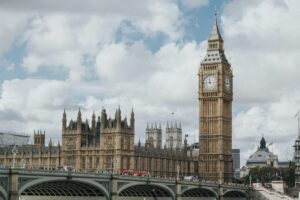Since then, we have entered phase 2, where markets are recovering from their panic mode, and are encouraged to see the light at the end of the tunnel, as these exponential curves are starting to look a little more reassuring almost everywhere, to various extents, and the market positioning has become very light. But at the same time, they will soon be able to measure the concrete economic impact of these lockdowns as economic numbers post-February start getting published. For instance, job losses in the US have started to shoot up – and this will get worse.
Companies will start releasing quarterly results and guidance next week which are likely to be painful, even though the figures for January and most of February were still normal. The thing to keep in mind here is that as opposed to a classic cyclical downturn, it is the services sectors here which are the hardest hit, and they represent in our economies 70 to 80% of GDP. So, our central scenario is that this phase 2 is going to be a mix of markets coming back to their senses, but also starting to put serious numbers on the economic damage.
We expect this period to be quite volatile – hopeful, but with uncertainty. Incidentally, this is true of bond markets as well, where yields have been bottoming and seem now to be entering a trading range. We therefore expect a lot of ups and downs in markets. The past days were very strong, we’ll see what happens next week. We’ll navigate this period as well as we can, but clearly you can’t be right every day in such a period.
This is why we have generally raised our risk profile going into this phase, but only to moderate levels in order to smooth out the volatility of our funds.
There is doubtless a bull case for phase 3, based on what looks like limitless firepower thrown at the problem by policy makers. The Fed Balance sheet has literally exploded by 40% in six weeks, that is USD 1.6t! Fiscal effort is also huge. Incidentally, this also is a reminder that the scale of the effort is not nearly as impressive in other regions. So we take this into account but we are today working on four issues that concern us a great deal for the future.
One concern is how the European Union will deal with the casus belli of a situation where actual solidarity is needed. It is really a political matter not just an economic one. We’ll see what the Eurogroup of Finance ministers will manage to agree on shortly, but here a concrete political commitment, at the highest level, is going to be necessary, otherwise we’ll stay with issues of conditionality of help, duration of loans, procrastination, and the difficulty will rise. Such an agreement by Head of States is not totally out of the question, but clearly remains uncertain, so that we stay cautious for the time being.
Second concern is EM. How certain weak emerging markets will deal with this lasting stress on USD funding?
Third, how lasting is going to be the initial hit to economic activity? Analysts have brought down their expectations for 2020 but could they still be behind the curve?
And fourth, what will be the degree of coordination in the recovery effort? This could be very important. After 2008, the US demonstrated quite strong leadership, but Europe made the choice of austerity. This time while Europe does not look be very coordinated, it is not going for austerity, but clearly the US is also not trying to show any global leadership. Each region, if not each country tends to go it alone, which could pave the way for a very tricky political and economic landscape in the future.











